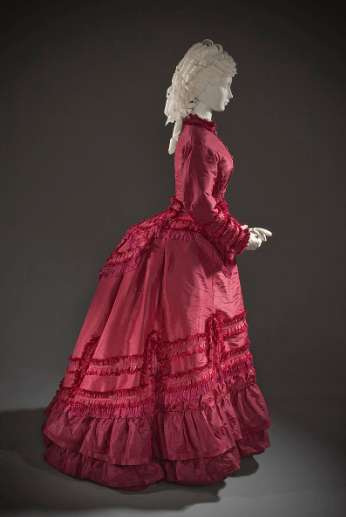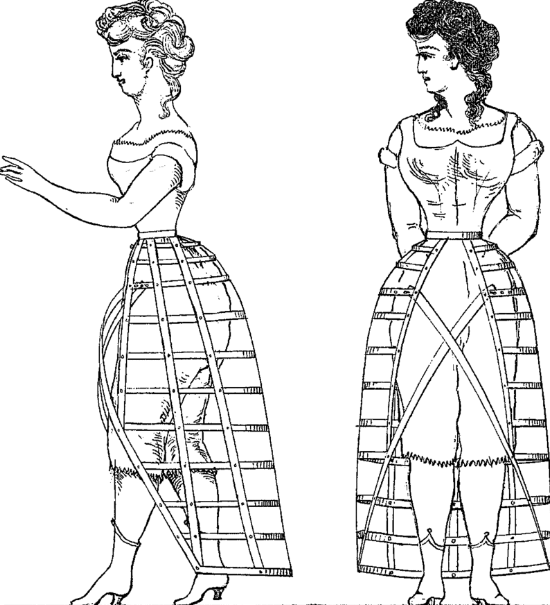Long before the advent of creams, pills, and cosmetic surgery to add fullness and give a desirable shape to the buttocks, there was the bustle. Just like the corset or the crinoline, the bustle is made to give a flattering silhouette to a woman’s body. The bustle is one of the clothing trends that became popular during the 1800s.
The crinoline – the fashion trend that preceded the bustle
Speaking of crinoline, some more knowledgeable fashion fans may be aware of it, as well. It was a large, bell-shaped hoop worn under a woman’s skirt to hold it up and give it a defined shape and volume, like the shape of a bell. It became popular through the mid-1800s. Technically a kind of petticoat, the crinoline was made of stiff material, usually a combination of steel and horsehair. The word “crinoline” comes from the French word crin, which means “horsehair.”
And just like the corset, the crinoline was quite uncomfortable to wear – but not only that. It was also terribly impractical, dangerous, and even potentially deadly. In fact, recent history data reveal that thousands of women actually died from crinoline mishaps, most of them fire-related.
From the bell-shaped silhouette, the trend quickly moved to a new look where the front and sides of the body would remain flattened, while the back would look full, rounded, and “humped.” And this would-be novel fashion trend would give birth to the bustle.
The bustle’s fleeting popularity
The bustle was patented in 1857. However, the crinoline’s popularity persisted for a few more years before the bustle took off. The first iterations of the bustle were worn low and somewhat similar to a flowing train. The bustle was typically constructed of cotton and steel. It was usually worn by tying or buckling around the front of the waist.
The crinolette was a type of crinoline that created a shape similar to the bustle – flat on the front and humped on the back. The crinolette worked similarly to the crinoline, but it had hoops only at the back rather than the full bell-shaped of the latter. It was even more restrictive than the crinoline, which made sitting down difficult for the wearer.
By the early 1870s, the bustle had developed into a fashion feature of its own, which was situated over the posterior and usually tied around the waist. Fullness was still considered a top consideration to make the waist look smaller, and the bustle eventually replaced the crinoline completely.
There was a short period of “backless” (non-bustled and flat-backed) dresses from the late 1870s to the early 1880s. However, the bustle reappeared after that period and became popular once again from the mid- to late 1880s. The size of the bustles became so exaggerated to the point of being ridiculously huge to other people. Thankfully, that trend for large bustles ended in 1889.
While the bustle enjoyed a good run, the end of the 19th century saw more women desiring greater mobility as they increasingly took a more active part in society. Since then, dresses had become more tailored every year. The skirts deflated while the bodice evolved at a slower pace.
Whenever women wanted a more desirable silhouette, that should be up to the corset. Despite several innovations, the bustle became outmoded at the beginning of the 20th century. Among the fashion trends of old, the corset is the only one to have maintained a presence in modern Western fashion today. The bustle, meanwhile (along with the crinoline and the crinolette), has practically gone out of fashion. Nowadays, it is worn only as part of a “period” costume ensemble or as part of bridal fashion.



